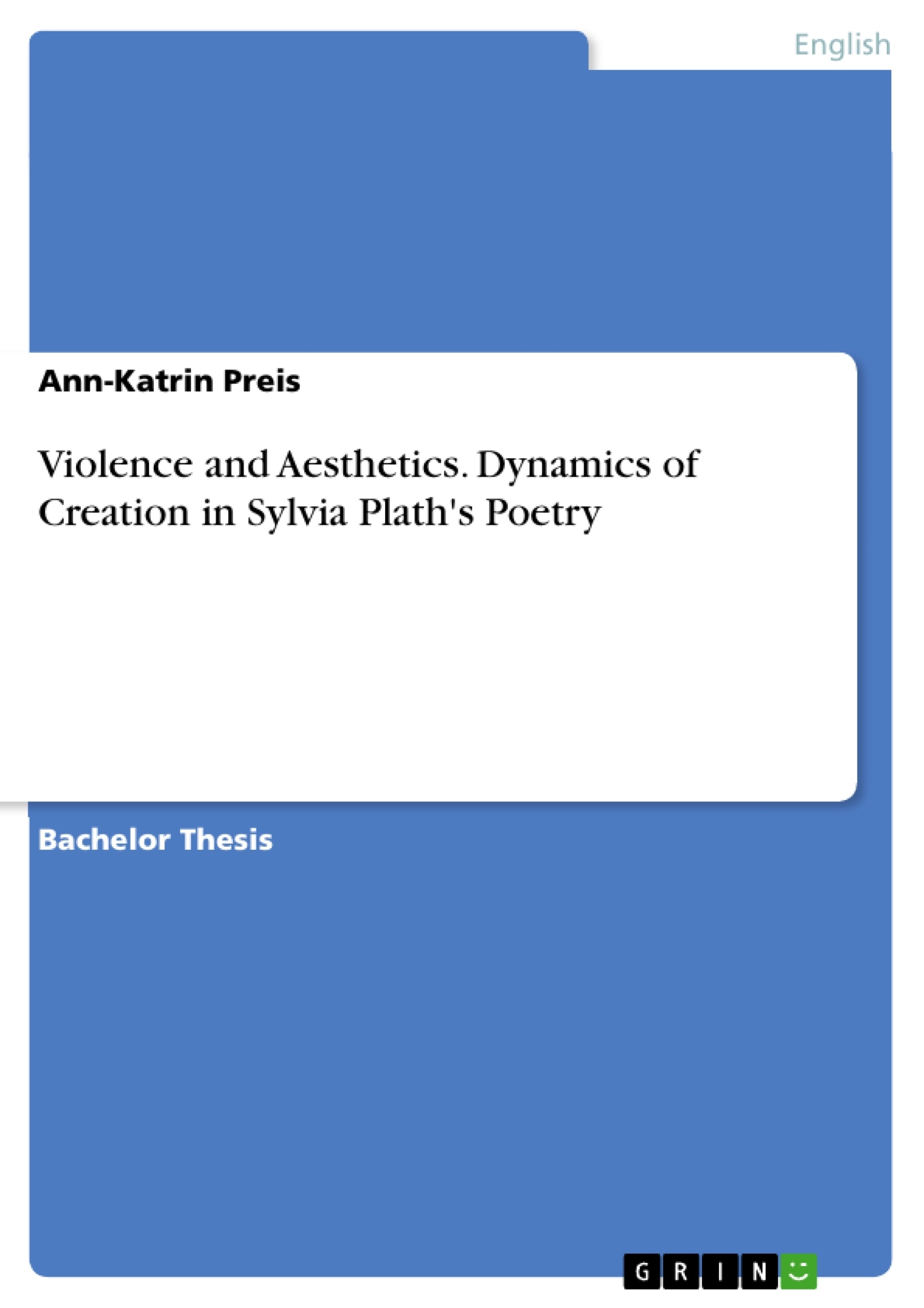This paper is an attempt to shed a different light on the violent quality of Sylvia Plath's writing and to do justice to her artistic brilliance. Various insights into her work shall challenge common criticism and are intended to hint at the masterly skill with which Plath fundamentally conflates violence and aesthetics by for example transcending the boundary between reality and art, by bestowing verbal violence with a creative and identity-establishing power, and by rooting trauma psychopathology in rhetoric.
Sylvia Plath thus not only comes to terms with the collective trauma of the past, but also establishes imaginative violence as an essential mechanism of empowerment within art.
Plath has polarized and caused controversy ever since she passed away in 1963. The relatively tragic story of her life has constantly drawn readers’ and scholars’ attention, who seemed to be unable to withdraw from the mysterious spell she has had. In her lifetime Plath contributed various articles to popular journals, wrote a collection of short stories and published a book of poetry as well as her famous novel The Bell Jar, the latter edited under a pseudonym. However, except for the novel the opus she published herself is less known and not very controversial, in contrast to what followed after her death.
In the last few months before her suicide, Plath wrote a collection of poems, which is coined by a very aggressive tone, sinister character, and daring topics such as the Holocaust, hatred, and self-destruction. This contemplation as well as her journals, both of which were published posthumously by Plath’s husband Ted Hughes, really were and still are the critical instances of controversy.
Table of Contents
- Introduction
- Meaning of Violence and Placement of Plath in American Literature
- Forms of Violence in Plath's Opus
- Historical Violence
- Medical Violence
- Sexual Violence
- Psychic Violence and Death
- Mythological Violence
- Mythologization of Violence
- Violence and Language
- Trauma as Rhetoric
- Conclusion
Objectives and Key Themes
This paper argues that Sylvia Plath closely binds aestheticism to violence in her poetry. The main objective is to demonstrate how Plath utilizes violence as a tool of artistic creation by intermingling reality and art, manifesting violence in language and art’s essence, and turning traumatic psychopathology into a rhetorical strategy. The paper investigates how Plath’s poetry ultimately entrenches violence as the very mechanism of art, making both art and violence mediums of creation.
- The concept of violence in literature and its representation in American literature.
- The different forms of violence in Plath’s poetry, including historical, medical, sexual, psychic, and mythological violence.
- The role of mythologization in Plath’s poetry and how it influences the representation of violence.
- The connection between violence and language as a medium of both violence and identity formation.
- The use of trauma as a rhetorical strategy in Plath’s poetry and how it contributes to the aesthetic transcendence of violence.
Chapter Summaries
- Introduction: Introduces the central argument of the paper, highlighting Sylvia Plath’s portrayal of violence and trauma in her poetry. It establishes the context of Plath’s life and work, exploring the controversy surrounding her writing and her struggles with mental health. The introduction also touches upon the problematic interpretations of Plath’s work as a product of her psychological state, arguing instead for understanding her representation of violence as a deliberate artistic choice.
- Meaning of Violence and Placement of Plath in American Literature: This chapter clarifies the paradigm of violence in literature, reviewing its historical representations in American literature throughout the centuries. It explores how violence in literature reflects historical tensions and the evolving meaning of violence within literary movements like anti-rationalism and modernism. The chapter also examines how Plath’s treatment of violence as a creative force aligns with these broader trends.
- Forms of Violence in Plath’s Opus: This section explores five prominent types of violence found in Plath’s poetry: historical, medical, sexual, psychic, and mythological. The chapter analyzes how these different forms of violence intertwine and contribute to the blending of violence and aestheticism within her work.
- Mythologization of Violence: This chapter delves into the dimension of mythological violence in Plath’s poetry. It examines how the representation of mythical characters evolves throughout her work, from detachment to unification with the lyrical self. The chapter explores how Plath blurs the boundaries between reality and myth, creating a sphere of artistic meta-reality where violence functions as an imaginative and creative force.
- Violence and Language: This chapter investigates the nature of language as a medium of both violence and identity formation. It demonstrates how language itself can be considered a source of violence, challenging the notion that violence originates solely from external forces. The chapter explores how language’s imaginative quality enables the lyrical self to transcend into an artistic meta-sphere, unifying violence and aesthetics as a medium of creation.
Keywords
This paper examines Sylvia Plath’s poetry, focusing on the themes of violence, aesthetics, trauma, identity, language, and mythologization. It explores how Plath utilizes these concepts to create an artistic vision that intertwines violence with creative expression. The paper analyzes Plath’s representation of various forms of violence, including historical, medical, sexual, psychic, and mythological violence, highlighting how these forms contribute to the overall aesthetic experience of her poetry. Furthermore, the paper investigates the role of language in shaping both violence and identity in Plath’s work, examining how the artistic manipulation of language becomes a form of violence and a means of transcendence. Ultimately, the paper seeks to demonstrate how Plath’s poetry redefines the relationship between violence and art, presenting violence as a generative force in the creative process.
- Quote paper
- Ann-Katrin Preis (Author), 2018, Violence and Aesthetics. Dynamics of Creation in Sylvia Plath's Poetry, Munich, GRIN Verlag, https://www.grin.com/document/458002



